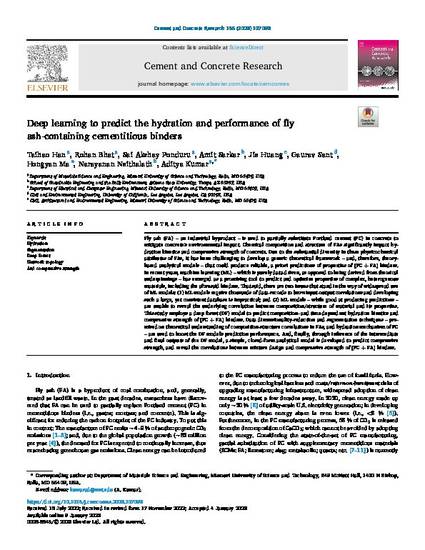
Fly ash (FA) – an industrial byproduct – is used to partially substitute Portland cement (PC) in concrete to mitigate concrete's environmental impact. Chemical composition and structure of FAs significantly impact hydration kinetics and compressive strength of concrete. Due to the substantial diversity in these physicochemical attributes of FAs, it has been challenging to develop a generic theoretical framework – and, therefore, theory-based analytical models – that could produce reliable, a priori predictions of properties of [PC + FA] binders. In recent years, machine learning (ML) – which is purely data-driven, as opposed to being derived from theorical underpinnings – has emerged as a promising tool to predict and optimize properties of complex, heterogenous materials, including the aforesaid binders. That said, there are two issues that stand in the way of widespread use of ML models: (1) ML models require thousands of data-records to learn input-output correlations and developing such a large, yet consistent database is impractical; and (2) ML models – while good at producing predictions – are unable to reveal the underlying correlation between composition/structure of material and its properties. This study employs a deep forest (DF) model to predict composition- and time-dependent hydration kinetics and compressive strength of [PC + FA] binders. Data dimensionality-reduction and segmentation techniques – premised on theoretical understanding of composition-structure correlations in FAs, and hydration mechanism of PC – are used to boost the DF model's prediction performance. And, finally, through inference of the intermediate and final outputs of the DF model, a simple, closed-form analytical model is developed to predict compressive strength, and reveal the correlations between mixture design and compressive strength of [PC + FA] binders.
- And Compressive Strength,
- Deep Forest,
- Hydration,
- Network Topology,
- Segmentation
Available at: http://works.bepress.com/hongyan-ma/132/

National Science Foundation, Grant 1932690